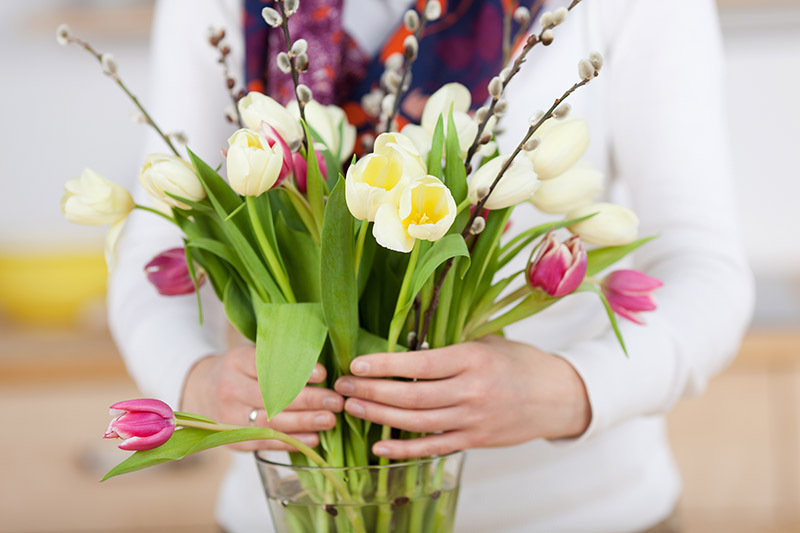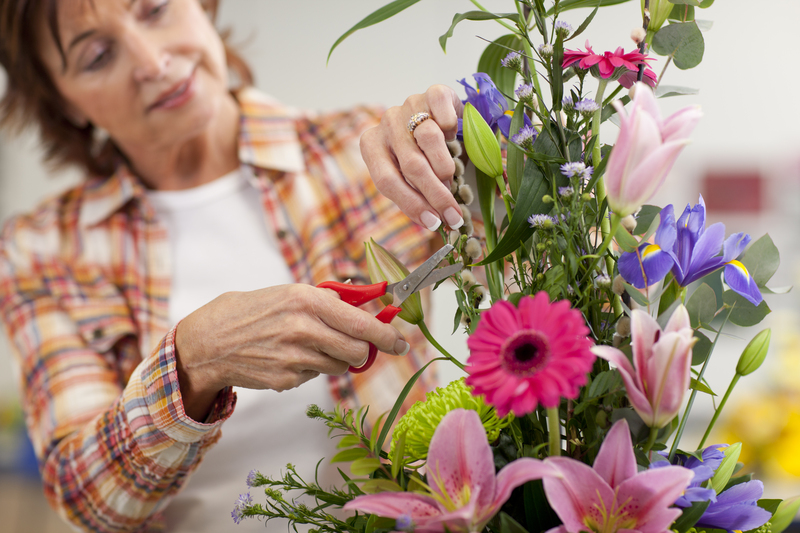Incredible Insights: 7 Tulip Facts Worth Knowing
Posted on 14/08/2025
Incredible Insights: 7 Tulip Facts Worth Knowing
Tulips are more than just vibrant symbols of spring. With their defining cup-shaped blossoms and remarkable cultural significance, tulips have amazed people worldwide for centuries. In this comprehensive article, we'll unravel seven fascinating tulip facts that every flower lover, gardener, and history enthusiast should know. Discover their intriguing origins, economic impact, symbolism, and more as we explore the incredible world of tulips.
1. Tulips Originate from the Rugged Mountains of Central Asia
Although tulips are inextricably linked with the Netherlands, their fascinating journey begins much further east. Tulips are native to a region stretching from Southern Europe through North Africa, all the way into Central Asia, notably in areas that are now Kazakhstan, Uzbekistan, and Afghanistan. They thrived in the high, rocky slopes, adapting to harsh climates long before capturing European imaginations.
How Tulips Traveled to Europe
- Introduced to Western Europe in the 16th century by Ottoman sultans who prized them in their imperial gardens.
- Botanist Carolus Clusius was pivotal; he brought the tulip from the Ottoman Empire to the Netherlands and documented its cultivation, sparking widespread tulip mania.
- Tulip cultivation flourished in Dutch soil and quickly became a national obsession.
Tulip facts like these highlight the remarkable journey these petals have crossed to become an icon in a land far from their origin.

2. The Dutch Golden Age and the Astonishing Tale of Tulip Mania
The 17th century gave rise to the world's first speculative bubble--Tulip Mania. As the popularity of tulips soared in the Netherlands, bulbs became status symbols, and their prices inflated to unimaginable levels.
Key Insights into Tulip Mania
- At its peak, some rare tulip bulbs sold for more than the price of a house in Amsterdam!
- Financial frenzy: Traders bought and sold tulip futures, often with no intention to plant a single bulb.
- The crash: The bubble burst in 1637, causing financial ruin for many but establishing the tulip's place in economic and horticultural history.
Why is Tulip Mania Worth Knowing? It serves as an early lesson in the dangers of speculative investing--and reflected just how captivating tulip flowers had become. The legacy persists, and today the Netherlands remains synonymous with tulip fields, exports, and festivals.
3. Tulips Show Astonishing Diversity
One of the most fascinating tulip facts is their immense variety. The Tulipa genus comprises over 75 wild species and more than 3,000 cultivated varieties (known as "cultivars"), each offering unique shapes, heights, colors, and bloom times.
Popular Tulip Types
- Single Early -- classic cup-shaped blooms, flowering first in spring.
- Double Late -- full, peony-like flowers with abundant petals.
- Parrot Tulips -- dramatic, ruffled petals often streaked with multiple colors.
- Viridiflora -- green-streaked petals set these apart from the crowd.
- Fosteriana & Darwin Hybrids -- tall, robust varieties famed for their vibrant reds and yellows.
Tulips not only offer a wide spectrum of colors--from the purest whites to fiery reds and even near-black hues--but also feature fringed, lily-flowered, and botanical types admired by serious collectors.
4. Decoding Tulip Symbolism Across Cultures
Rich in symbolism, tulips convey diverse meanings worldwide. This powerful bloom has inspired art, poetry, and folklore for hundreds of years, making it a cultural ambassador as well as a garden favorite.
- Love and Passion: Especially red tulips, which represent true love in Turkish and Persian traditions. In Victorian England, the tulip also became the flower of declaration.
- Charity and Grace: White tulips are symbols of forgiveness, purity, and respect.
- Renewal: Tulips, as one of the first flowers to bloom in spring, embody rebirth and new beginnings.
Knowing the rich symbolism behind tulips can enrich your flower gifting or garden design, infusing every bloom with deeper meaning.
5. Tulip Festivals: A Global Celebration
The tulip has inspired grand festivals around the world, transforming entire towns and cities into spectacular seas of color each spring.
Some Must-See Tulip Festivals
- Keukenhof Gardens (Netherlands) -- More than 7 million bulbs bloom in this world-famous park every year.
- Ottawa Tulip Festival (Canada) -- Celebrates Dutch-Canadian friendship, with over 1 million tulips on display.
- Skagit Valley Tulip Festival (USA) -- Fields of tulips stretch for miles in Washington State.
- Istanbul Tulip Festival (Turkey) -- Pays homage to the flower's Ottoman origins, with vibrant displays across city parks.
If you're a traveler or photography enthusiast, attending a major tulip festival is an unforgettable experience. Tulip facts like this one highlight their unifying impact across cultures and continents.
6. Surprising Uses and Edibility of Tulips
Did you know some parts of the tulip are edible? While tulip bulbs are generally considered toxic, history shows us that in times of hardship, they have served as a food source.
Tulip Uses Through History
- WWII Netherlands Hunger: During the famine of 1944-45, Dutch people baked tulip bulb bread as food became scarce. The bulbs, when properly prepared, can be eaten, though some varieties are safer than others.
- Culinary experiments: Tulip petals (not bulbs) are sometimes used as garnishes in haute cuisine. They are mildly sweet and crisp, but only untreated, pesticide-free petals should be used.
- Traditional medicine: Some Eastern folk remedies include tulip poultices to reduce inflammation, though scientific evidence is limited.
Warning: Many tulip varieties contain alkaloids that can cause stomach upset and allergic reactions. Always check for safety before using tulips in cooking or remedies.
7. Tulips Are a Powerhouse of Dutch Economy and Global Trade
The tulip flower is now inseparable from Dutch identity--a fact that's mirrored in the country's powerful export industry and breathtaking springtime landscapes.
Dutch Tulip Industry in Numbers
- 80% of global tulip bulbs are grown in the Netherlands.
- Each year, the country exports over 2 billion tulip bulbs across the world.
- Tulip farms attract millions of tourists, boosting the local economy and sustaining rural communities.
- Keukenhof Gardens (the world's largest flower garden) exemplifies the nation's devotion to tulip cultivation and floral artistry.
It's no exaggeration to say that tulips helped shape Dutch history, culture, and landscapes. From the "bollenstreek" ("bulb region") to bustling flower auctions, the tulip's influence is everywhere.
Bonus Fact: Tulip "Breaking" and the Mystery of Striped Blooms
Some of the most coveted tulips during Tulip Mania featured striking, broken color patterns--vivid streaks of contrasting colors. For centuries, the cause of these dramatic petals was unknown.
- Modern science has revealed that tulip breaking occurs due to a benign virus, now called the tulip breaking virus, which disrupts the pigment in petals.
- While beautiful, the virus weakens bulbs over generations, making authentic "broken" tulips rare and precious.
Today's fancy striped tulips often arise from deliberate crossbreeding, preserving beauty while protecting plant health.

Tulip FAQs: Quick Answers to Common Questions
- When's the best time to plant tulip bulbs? Plant in autumn, about 6 to 8 weeks before your ground freezes, for dazzling spring blooms.
- How long do tulips bloom? Each flower lasts around 1-2 weeks, with different varieties extending the display for up to 6 weeks total.
- Can you grow tulips indoors? Yes! "Forcing" tulip bulbs in pots is a popular way to enjoy their blooms in winter.
- Are tulips perennials? In their native range, tulips are perennial, but cultivated bulbs may dwindle over years. Replanting ensures the best displays.
- Are tulips toxic to pets? Yes. Tulip bulbs are particularly toxic to cats and dogs if ingested.
Conclusion: Celebrate the Wonders of Tulips
Tulips are more than just springtime blooms. With a history woven through empires, fortunes gained and lost during tulip mania, unmatched diversity, and enduring cultural significance, the story of tulips is as colorful as the flowers themselves.
Whether you're a gardener sowing new bulbs, a traveler seeking the world's greatest tulip displays, or simply someone who enjoys a fresh bouquet, keep these powerful tulip insights in mind. The next time you spot a tulip, you'll see not just a beautiful flower--but an incredible legacy.
Enjoy your adventure in tulip appreciation and share these amazing tulip facts with friends and family!
Latest Posts
8 Remarkable Facts About Sunflowers to Brighten Your Day
Send Love with Birthday Flower Delights
Simple Steps for Prolonged Poinsettia Care





